On my family's cross-country road trip, we recently had the joy of exploring the Adventure Playground in Berkeley, CA - twice. Having enjoyed it so much, we went again, two days after our first visit. I knew some of what to expect going in, having read about it on NPR and also having previously visited it's cousin, the Hands-on-Nature Anarchy Zone in Ithaca, NY. But I think my little family still would have been a funny sight at the entrance. The three of us just standing there, eyes wide open, not sure where to go or what to do first. Because, let’s face it, it’s very different from the kind of playground environments found elsewhere. But I left immediately wanting to create one at home and to share the ways you can too, if you're interested in this type of creative play.
Designed with curious and hands-on kids in mind, the Adventure Playground encourages unstructured free play and challenging play alike. You'll find tools, wood, paint, structures, musical instruments, tires and large pieces of construction equipment. At the Anarchy Zone we found similar objects with slight variations, as well as the use of water. What happens with all these loose parts can seem like chaos or like creativity in full explosion. Beauty in the eye of the little beholder. To me, it seemed the perfect mix of both, which came across as incredibly empowering for those little children.
In order to borrow a tool, kids need to conduct a risk assessment disguised as a scavenger hunt. You only receive a tool in exchange for finding a certain number of loose nails, big wooden splinters, garbage or a "Mr. Dangerous" - a piece of wood with the sharp end of a nail sticking out of it - around the playground. What a clever way to alert children to the potential dangers and letting them navigate around it, without - yes, pun intended - having to hammer the point home about safety or eliminating it all together.
In our visit, our daughter learned from my husband how to use a hammer, a saw and a vice grip. When another child approached her about how to use the tools, she was able to explain what she'd just learned to help teach this other child. She painted the fort-like structures around the playground alongside other children, then pretended those "forts" were her house and later, her bakery. She played the piano as loud as she wanted. And she climbed cargo nets and across static rope lines, while the older kids went down the zip line into a pile of sand. Even with the usual child chatter, laughing and quarreling, this was not your average playground.
Not your average takeaway either. It was clear our daughter was empowered to try new skills, both physically and socially, in an environment where kids rule the day. It was a place where pretty much every and anything goes. My family kept looking at each other, checking in to make sure we were breaking any rules. But there weren't really rules to break. The space, inspiring creativity and independence, coupled with the responsibility of being engaged in risky play felt extremely rare and special. Not just because I want my daughter to be able to flex her creative wings, but because the benefits and decreasing opportunities for risky play have been on my mind lately, the more coverage it receives. (And if you didn't catch it, here's my lastest piece on the benefits of risky play.)
But not everyone lives near an adventure playground. So when you don't live or travel near Berkeley, Ithaca, or where other playgrounds like this exist in the world, you can still have this kind of experience for your children. Go getters may be inspired to create one for your community (go you!), but you also may just be inspired to create elements of them in your backyard.

Photograph Courtesy of family+footprints.
Here are some components to get you started:
01. Tools
Select tools - hardware tools, not pretend versions - for children to utilize in their play. This can include hammers, nails, screwdrivers, screws, shovels, wheelbarrows, saws, vice grips, measuring tape, etc. At my daughter's age, this went hand-in-hand with an introduction to these tools, as a safety and information measure.
02. Paint Supplies
Offer paint and paint brushes - again here you're looking for actual wall painting brushes, to either combine or use independent of other art brushes you may already have available for your child.
03. Loose Parts
Along with the tools and paint supplies, you can offer other loose parts for engagement and creativity. Consider wood to be built with or painted, other construction equipment, like PVC piping, a hose, tires, rope, water beads, pots and pans, utensils, dishes, measuring cups, musical instruments, etc.
04. Available Work Space
A big component of this type of play seems to be the accessibility of the various elements. Tools, paint and loose parts are available for children to reach and play with when inspired. They are able to be used in a designated area without limitation (of how much sound they generate, or of how much of a "mess" they make) for their ideas. Provide a work space that is set up for your child to not just store and access but also utilize their supplies.
05. Hidden Spaces
Both adventure playgrounds we visited offered - and children readily took full advantage of - hidden spaces. Small or large wooden fort-like structures, places they can go into an underbrush or wooded areas, or even sheets creating a covering. Feel free even to have your child help create the plan for what they want to build together with you or, depending on their age, the parts to be able to build it themselves.
You may read this and have the same look on your face that our family did when we stepped foot into the Adventure Playground - a little bit of shock and uncertainty about what to do next. Just start slow in terms of how much you introduce, and depending on the age of your child, provide the necessary guidance for how to turn risky play from something dangerous into something challenging and empowering. Before you know it, you just may find yourself and your child are ready to dive in more - tools, building, creativity, joy and all.
Interested in hearing more about these and other outdoor learning ideas? Follow us on Facebook here.


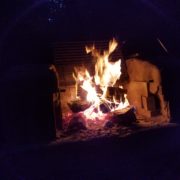
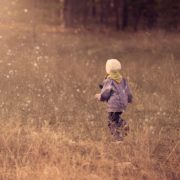
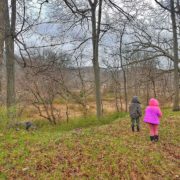
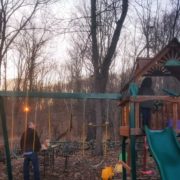
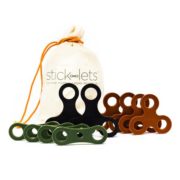
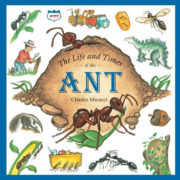
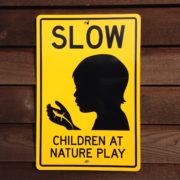
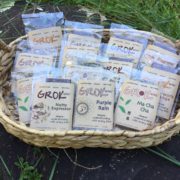
Awesome idea! I have never heard of these parks, but I love this.
Cool. I wish there were more of these natural, open ended parks around.